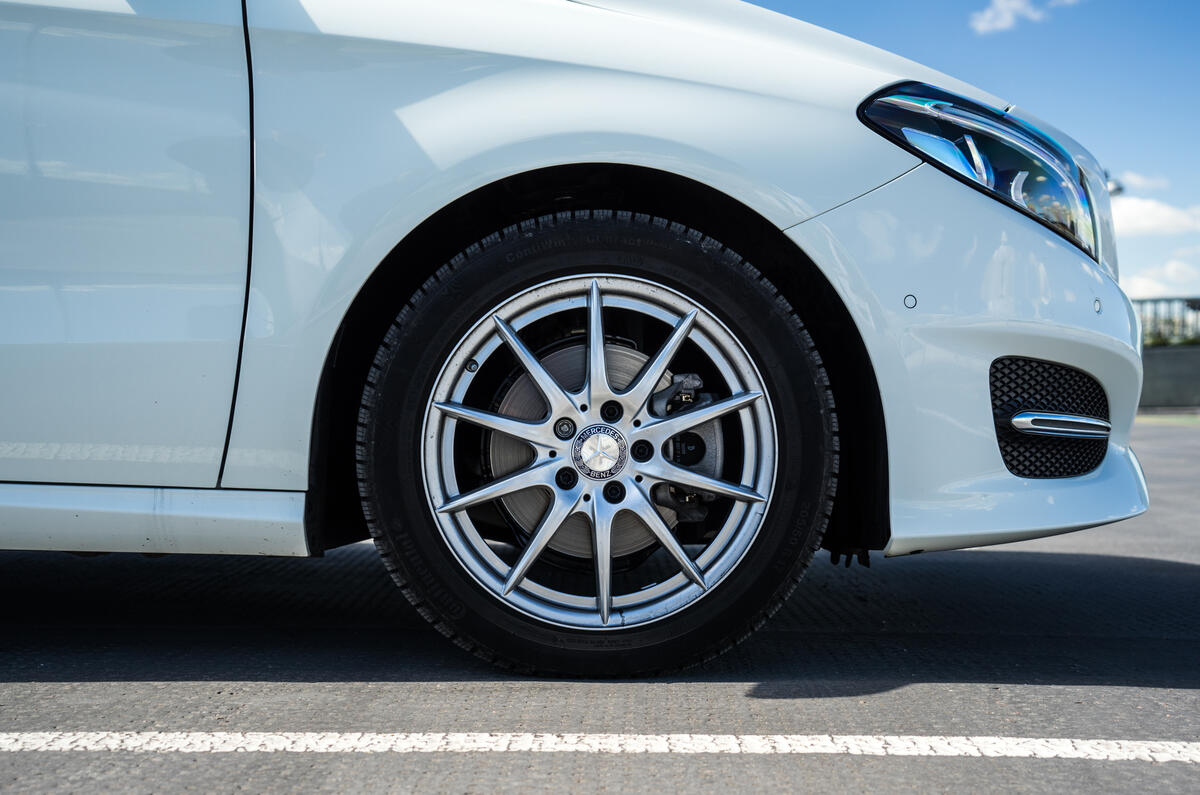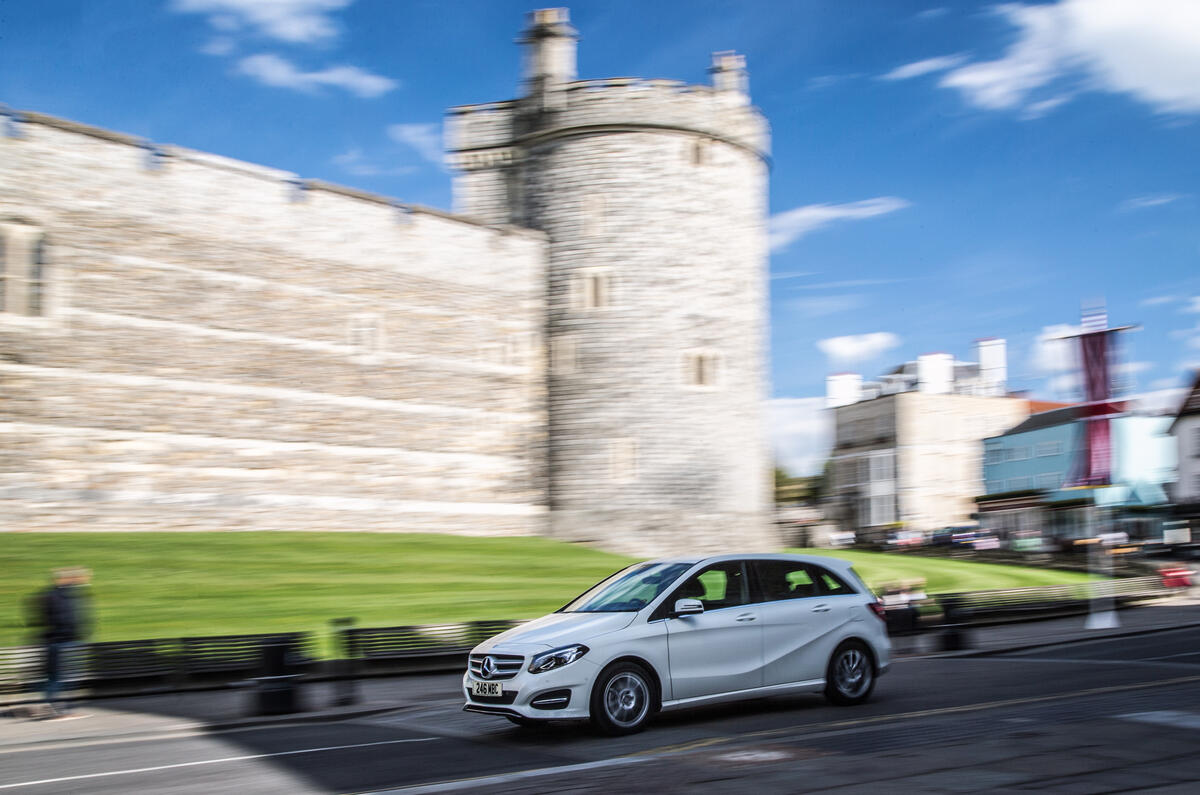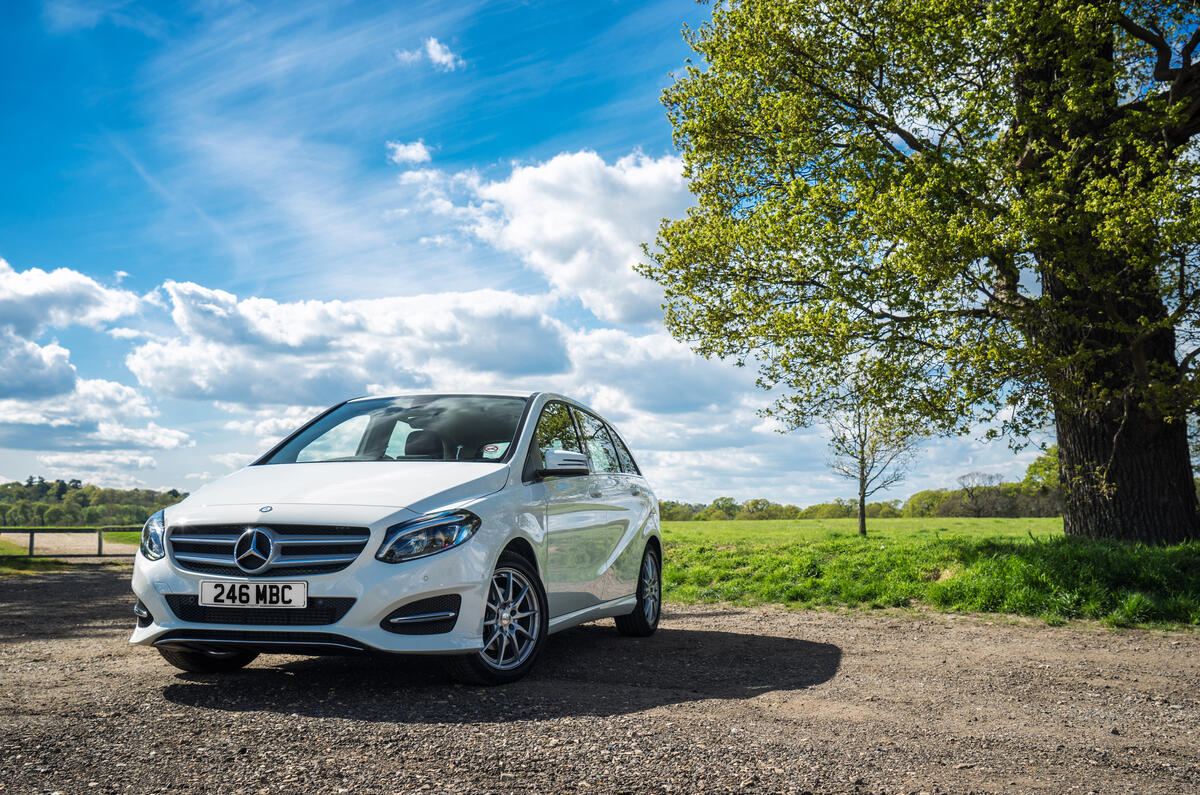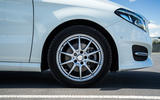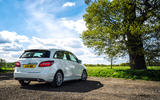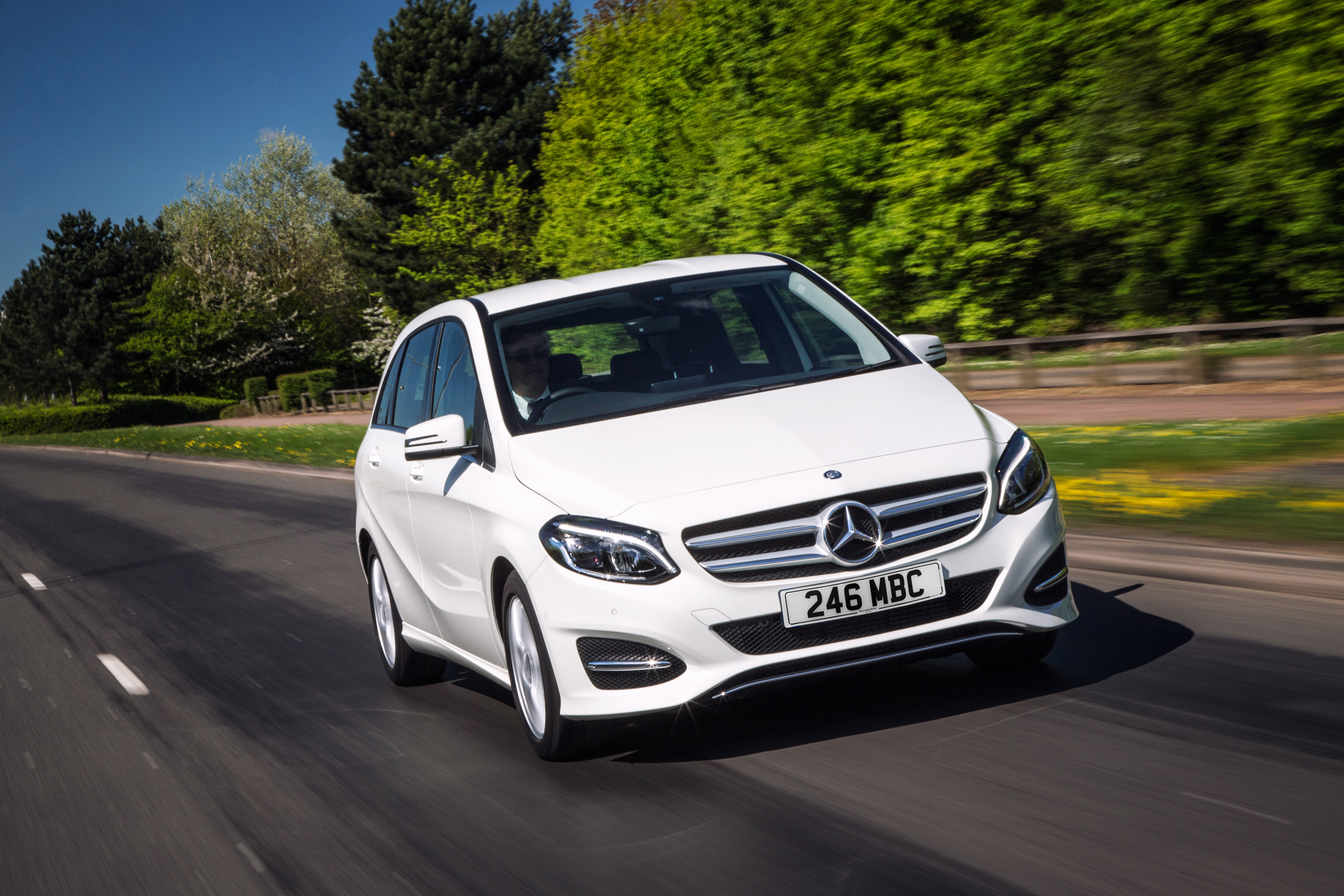All Mercedes-Benz B-Class models come powered by one of several four-cylinder engines. Buyers can opt for either a 1.6-litre petrol engine, a 1.5-litre diesel engine, a 1.8-litre diesel engine offered in two outputs depending on transmission choice, or a 2.2-litre diesel engine. These engines are badged B 180, B 180 d, B 180 d Automatic, B 200 d and B 220 d respectively.
Turbocharged in all cases, the engines produce between 107bhp and 168bhp, delivered exclusively to the front wheels. Most come with a six-speed manual gearbox, but Mercedes' seven-speed, dual-clutch automatic is optional on many models.
A drive of the B 180 revealed it to be far from the poor relation you might expect of an entry-level model. While 120bhp from a 1.6-litre engine may appear average, being turbocharged means it produces good torque, with 148lb ft on offer from 1250 to 4000rpm. This wide availability of torque, combined with the slick-shifting six-speed gearbox, allows for brisk progress to be made in the B 180.
The lower-powered diesel option, the B 180 d, appears to suit the more laid-back demeanour of the Mercedes B-Class. It pulls from low revs with decent urgency while still delivering adequate performance and an improvement in economy, with 69mpg claimed in manual form.
The B 200 d would give up nothing to many more conventional 2.0-litre diesel family hatchbacks out on the road. Mercedes has come up with a flexible and quite potent 1.8-litre powerplant for its new Mercedes-Benz A-Class and B-Class that, in the main, is an entirely agreeable thing to interact with.
With our timing gear strapped in, the car hit 60mph in 9.4sec and 100mph in 28.8sec. The 138bhp Volkswagen Golf 2.0 TDI we tested was less than half a second quicker into three figures. In a class where there are Audi, Alfa Romeo and BMW diesels with 30 per cent more power, the B 200 d doesn’t exactly overdeliver on outright urge. ‘Adequate’ is a better descriptor of its performance than ‘generous’ or ‘exciting’, so those looking for premium-level bang for their buck should probably shop elsewhere.
Economy is a stronger suit. Our touring test recorded 52.3mpg. That’s respectable, but our experience suggests it isn’t much better than a modern 2.0-litre diesel might have returned. Similarly, an average test result of only just over 40mpg is acceptable but not outstanding.
Opt for the B 220 d, however, and you'll be rewarded with a much more urgent and flexible engine. It's over a second quicker from 0-62mph than the B 200 d, and it delivers notably more torque over a wider spread of the rev range.
The grumblings of Mercedes' diesel motor in all instances, however, is unacceptable. This may well be a new engine for Mercedes, installed under the bonnet in a direction the firm may not be altogether familiar with, but it needs to be house trained. The whooshing of its induction system under load is decidedly unluxurious, as is the insistent metallic thrash of its gear-driven cams at high revs.






